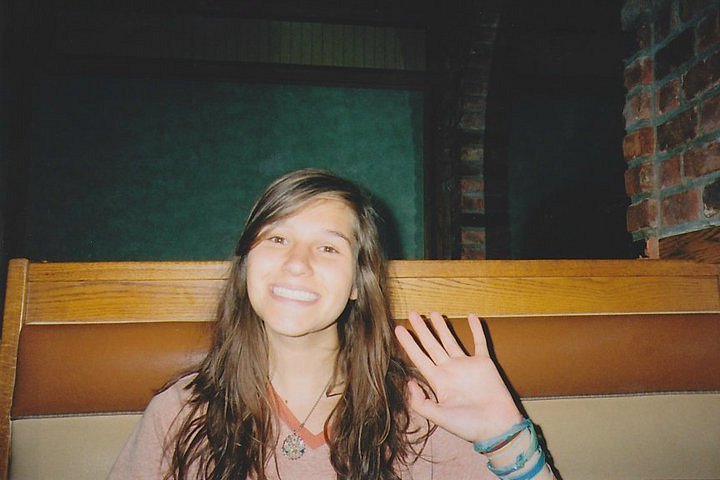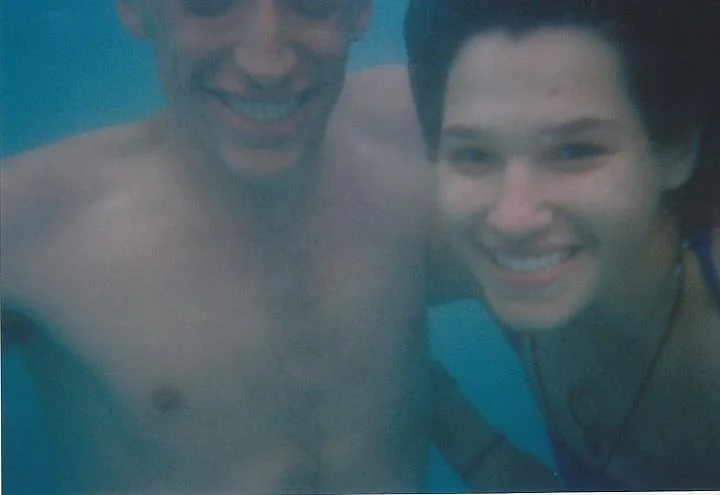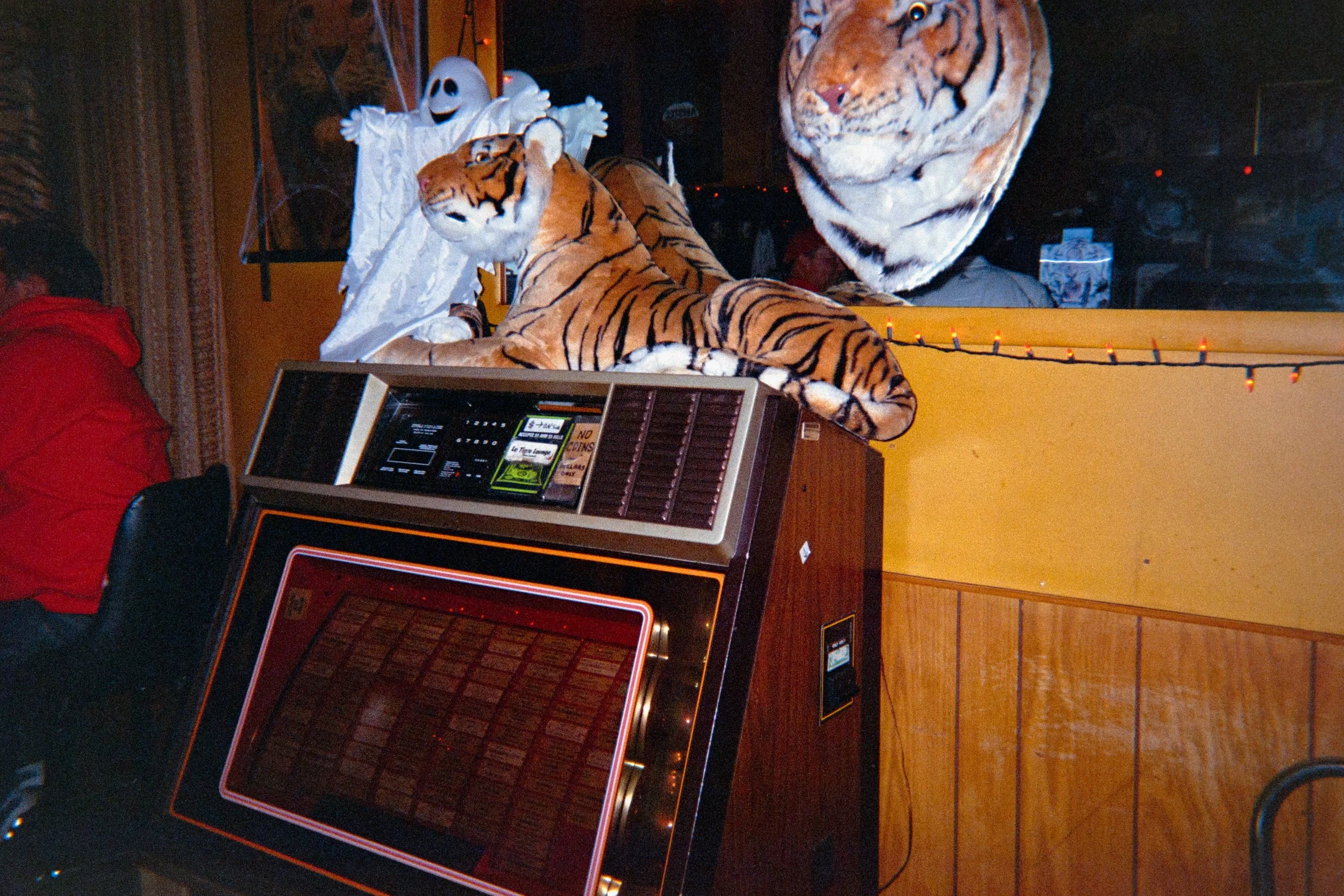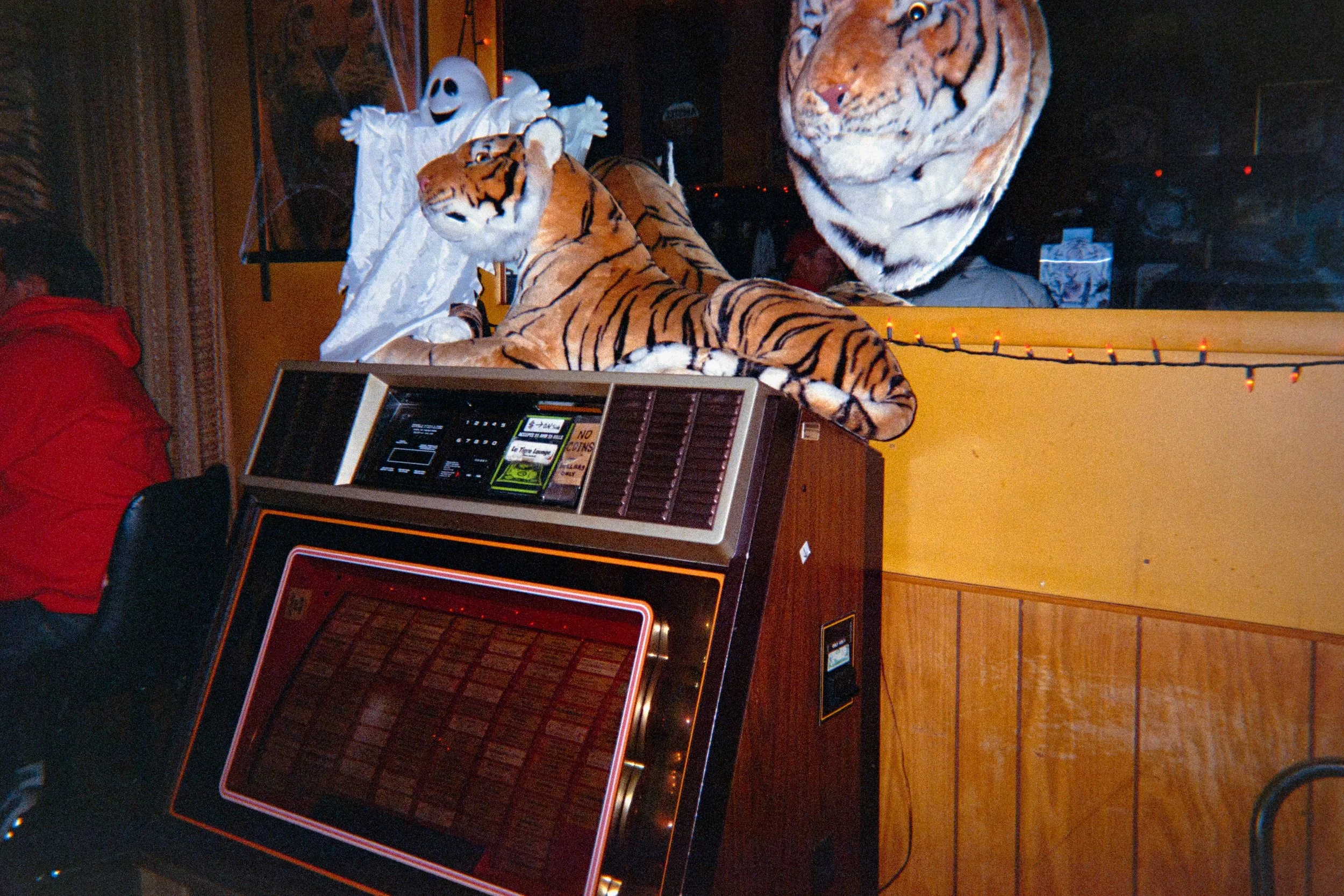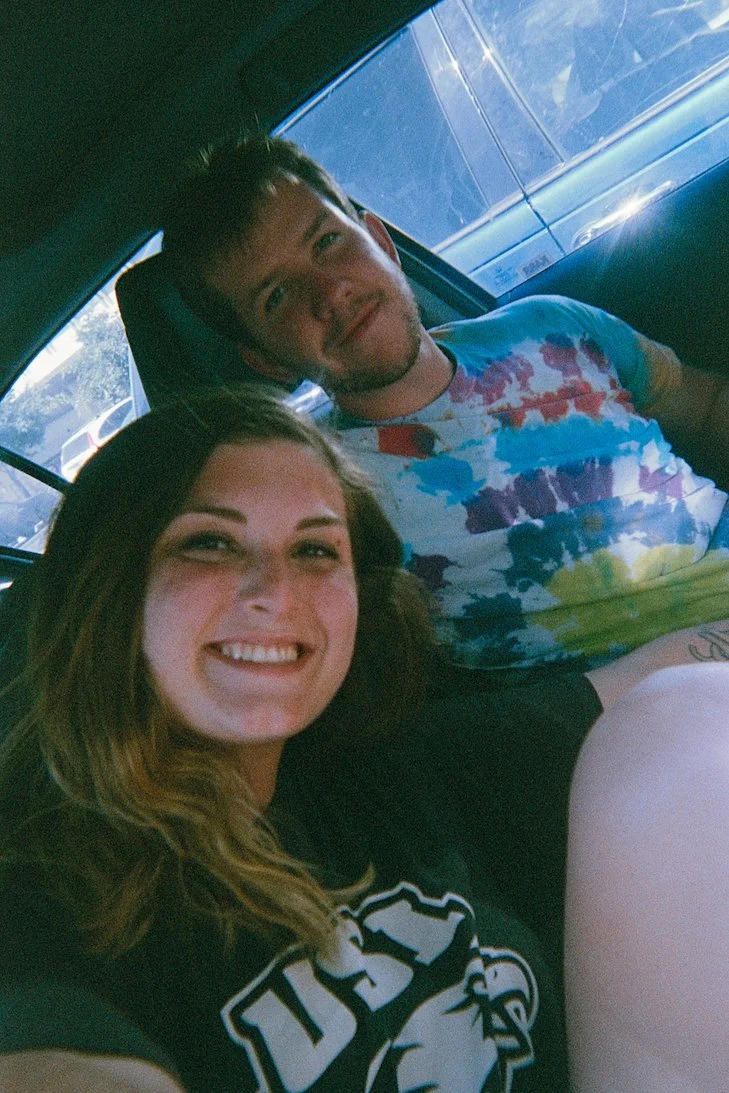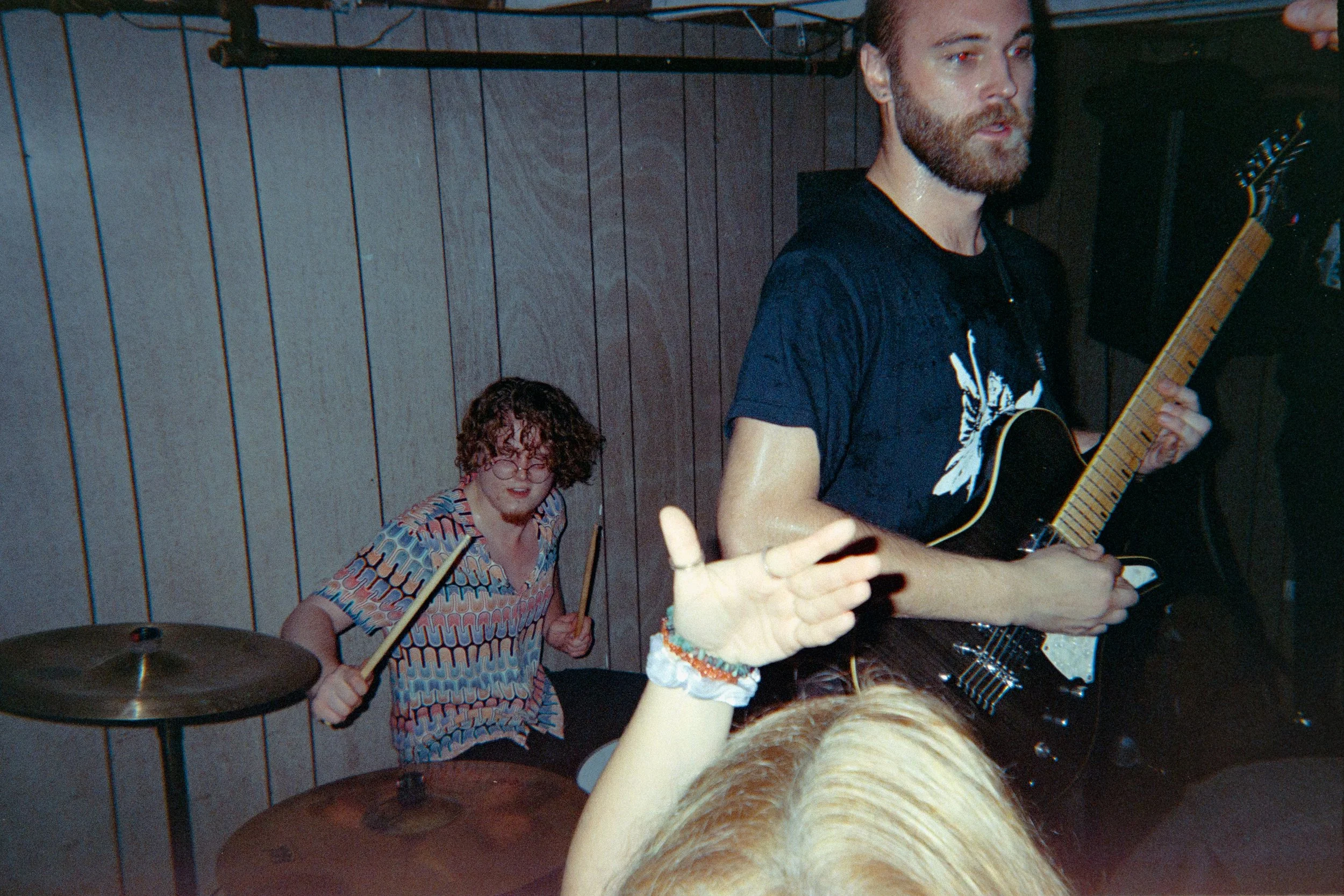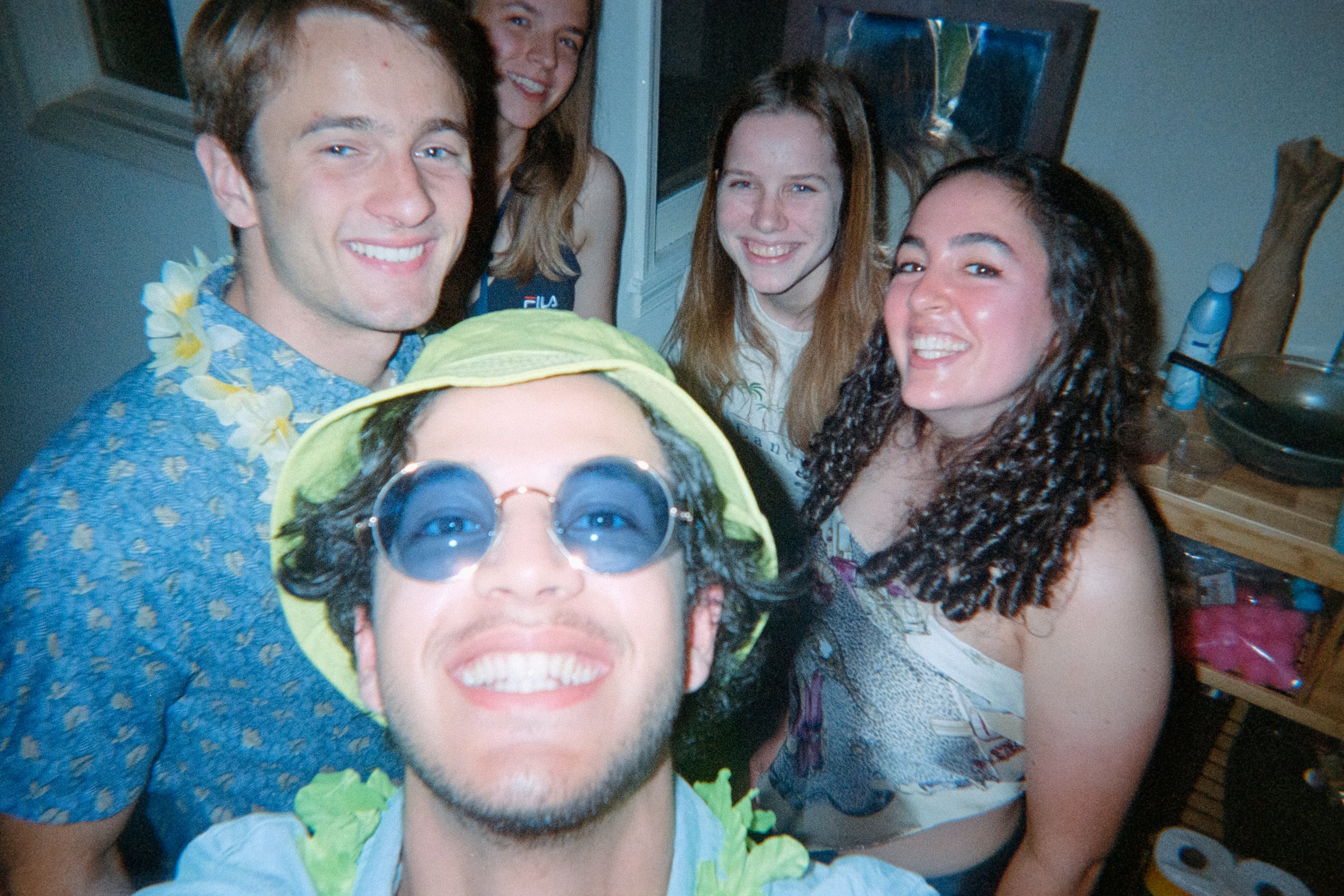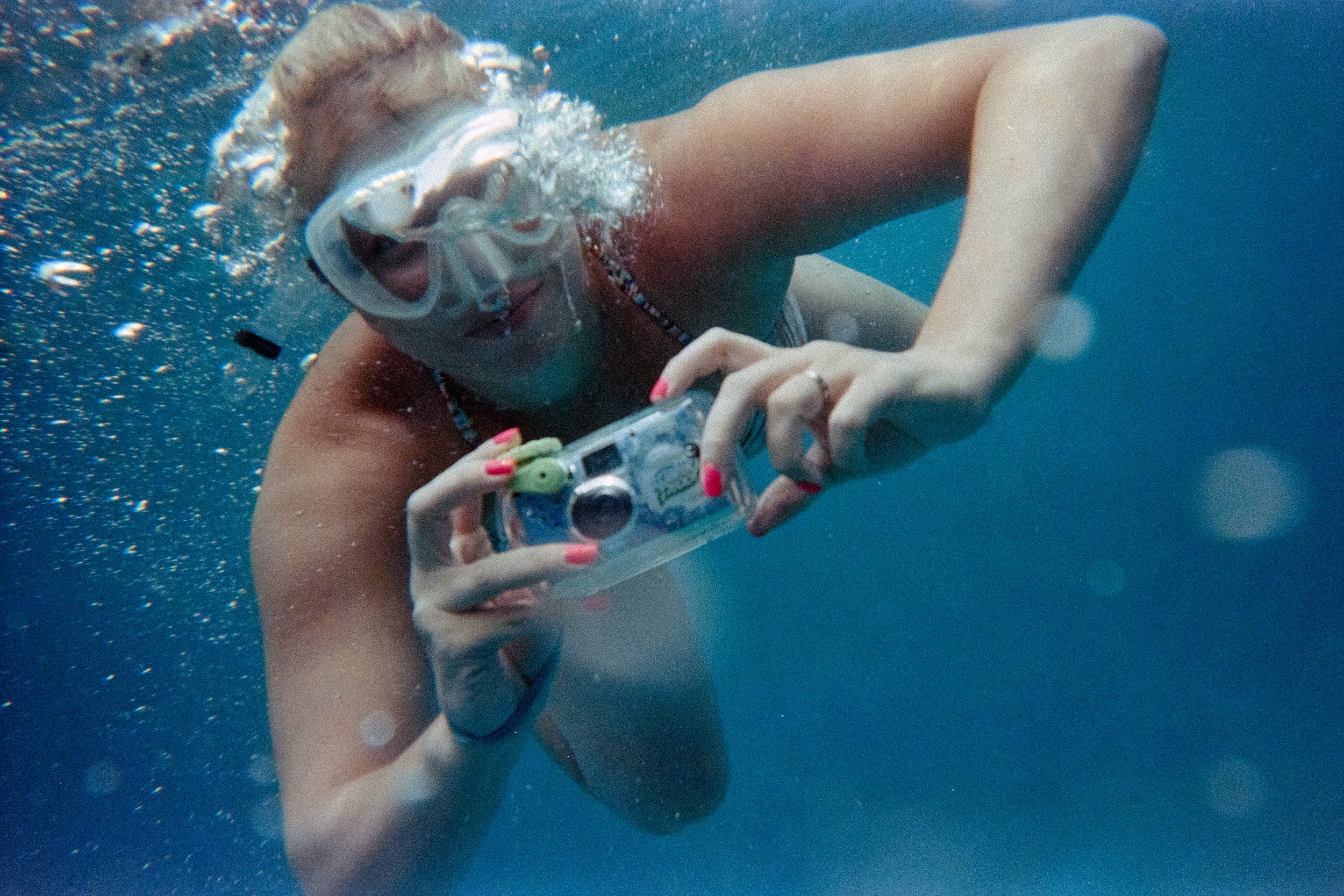Get Disposable Camera Developed Digitally
Getting your disposable camera developed digitally is easy and only takes a couple of steps!
You tell your friends to say “cheese”, you click the shutter button, and as everyone laughs, you begin to wind your disposable camera to the next frame. But this time, it just keeps winding. It doesn’t click like it did before. You look down at your camera and you see that you’ve just taken you last photo. As you look back up at your friends, you realize how awesome all of the memories you’ve captured are! The excitement sets in, but then you realize you’ve got to get the pictures off of the camera. How do you get disposable cameras developed digitally?
How do you get a disposable camera developed digitally?
Even though your disposable camera is new, it uses an older technology, photographic film. There are no digital components in your digital camera, so how do you get the pictures on your disposable camera on your phone? How can you turn those pictures into digital photos? It’s going to involve a two-step process. The first involves fixing the images on your film and the second step is converting your film to a digital image. Let’s talk about those two steps.
Step 1 - Develop Your Disposable Camera
Once your film is shot, the images that are captured on the film are considered latent images. They are can still be erased, damaged, or destroyed through improper handling. More importantly, the film is still sensitive to light. You could actually load the film back into the camera and take photos again and you would end up with what is called a double exposure, or two images taken on the same frame of film. Beyond the sensitivity to like, there’s no visible image on the film. It’s just going to be a brown and opaque film. The first step to convert your disposable camera to a digital picture is to run the film through the chemical process that fixes the film and makes it non light-sensitive. This is called getting your film developed.
Almost all disposable cameras contain color negative film, which needs to be developing using the C-41 process. This process uses a developer chemical, a bleach, a fixer, and a final rinse (some processes combine bleach and fix into what is called a “Blix” process) and requires you to agitate the film in a light-tight container, at a very specific temperature, for a very specific amount of time. This process can be done at home, but the equipment and time needed make this something many photographers do not want to do. However, if you’re interested in developing your own film, here’s a link to get you all of the equipment you would need to get started!
Your other option is get your film to a photo lab. We’ve got a great article HERE about how to find a place to get your disposable cameras developed. Depending on where you live, there might be a photo lab near you that can help you get your film developed. If there isn’t, there’s always the option of mailing your disposable cameras in. Our photo lab handles a large number of mail-in disposable cameras. If you’d like to find out how to send your cameras in to us, just CLICK HERE to find out more!
The photo lab can get your disposable camera developed quickly and professionally and will be able to prepare your negatives for archival so you can save them for the future! Once your disposable camera is developed, we move on to step 2, scanning your images (aka, digitizing).
Step 2 - Scanning
In the past, after your film was developed it would be optically printed using an enlarger and photo paper. After the world transitioned to digital, the process changed. Today, almost all film photos are scanned and converted to a digital images. This is a process you can do at home with just a light and a cell phone for a low quality image or something you can have a professional lab do for you!
There are several different methods of scanning, but all basically result in a digital image being taken of the original negative. The quality of your scan and resulting pictures depends on the equipment used. A cell phone with a cheap backlight will give you a decent digital pictures from your negative, but a dedicated film scanner at lab will give you a much higher quality digital image. Here’s a link to a great article discussing that different pros and cons of different types of film scanning - LensLurker - Guide to Scanning Negatives.
Depending on the method of scanning your use, there may be an additional step required - color conversion. Many softwares and apps will do the negative color conversion for you. Some will not and you will have to try to do the color inversion yourself. The scanning method is important, and the color conversion process is just as important as negatives can have slightly different characteristics and inverting them incorrectly can give you a really terrible image.
I started scanning film before dedicated software really existed. I had to either trust the really awful software that came with my cheap film scanner or try the inversion myself and it just never turned out right. The colors were always off. I was so happy when better film conversion came along. One of my favorites that easy to use is Negative Lab Pro - which works as a plug-in on Photoshop Lightroom Classic.
The good news however is that if you do take your disposable camera to a lab to be developed, the scanning is usually included and labs normally have some of the best scanning equipment to give you really great images! Larger scans are always better but not necessary unless you're planning to print your images in a really large format. If you’re just viewing your images on your phone or social media, basic scans are more than sufficient.
Move Your Disposable Cameras Pictures to Your Phone or Computer
If you develop and scan the images yourself, its just a matter of uploading them or transferring them. You can add your images to your Google Drive or your Apple Photos app or upload them directly to social media. If your images are coming from a photo lab, you should receive either a link to an online gallery or a CD or flash drive. If you receive an online gallery link, you’ll need to download the images to your local computer or your phone or tablet. Make sure you select the highest download quality possible. Some galleries allow you to download your images in various sizes and downloading a smaller size might result in you getting really pixelated images.
Once you get your images downloaded, make sure to store them in a safe place and keep a back-up. Online galleries expire and hard drives can failed or get lost. A great way to preserve your images is to get prints and to store the negatives in a safe place. Properly stored negatives can be rescanned at any time so you can recover the images even if the digital copies are deleted or lost.
Getting Digital Prints of your Disposable Cameras is Easy!
The entire process is easy! All you have to do is
Develop your disposable camera
Scan your negatives
Download the images or move them to secure storage
From analoge to digital in only a few steps! And you’re going to love the look of film!
Terrell High School Prom 2021
Are you looking for your photos from the Terrell High School Prom in 2021 that took place in Canton, TX? Well we’ve got your images here!
Click the button below to go to the online gallery to check out all of the amazing photos from that night!
Rediscovering Simplicity: Capturing Moments with a Disposable Camera
Introduction
In an era dominated by smartphones and digital photography, it's easy to overlook the beauty and charm of using a disposable camera. While we are surrounded by advanced technology that allows us to instantly capture and share images, there is something special about embracing the simplicity and unpredictability of a disposable camera. In this blog post, we will explore the joy and benefits of using a disposable camera to capture moments and create lasting memories.
Embracing the Element of Surprise: One of the most exciting aspects of using a disposable camera is the element of surprise. Unlike digital photography, where we can review and delete unwanted photos instantly, disposable cameras force us to relinquish control and accept imperfections. This unpredictability adds an air of excitement and nostalgia to the entire experience, as we eagerly anticipate how our pictures will turn out.
Slowing Down and Being Present: In today's fast-paced world, we often find ourselves caught up in the frenzy of capturing the perfect shot for social media. Disposable cameras offer a unique opportunity to slow down, be present, and truly enjoy the moment. Without the distractions of filters and edits, we can focus on the composition and subject, honing our photography skills and appreciating the beauty of the world around us.
Tangible Memories: In an age where most of our photos remain confined to digital albums or social media feeds, the physicality of a printed photograph is a delightful novelty. Disposable cameras provide tangible memories that can be cherished for years to come. Whether pinned to a bulletin board, placed in an album, or gifted to a loved one, these prints serve as a nostalgic reminder of the experiences we have lived and the people we have shared them with.
Unplugging from the Digital World: While smartphones have undoubtedly made photography more accessible, they also have the potential to disconnect us from the present moment. Using a disposable camera allows us to detach ourselves from the constant notifications, distractions, and pressures of the digital world. It encourages us to engage with our surroundings and the people we are with, fostering genuine connections and creating memories free from the virtual realm.
Conclusion
In a time when technology permeates every aspect of our lives, embracing the simplicity and charm of a disposable camera can be a refreshing change. It offers a unique opportunity to slow down, be present, and capture genuine moments with a touch of nostalgia. So, the next time you embark on an adventure or attend a special occasion, consider dusting off a disposable camera and rediscovering the joy of capturing memories in a more simple and tangible way.
It's time for a Disposable Camera Summer 2023
Disposable cameras are a great idea to bring along on all of your summer adventures!
Summer is just around the corner and it's time to start making plans for fun with family and friends in the sun, the waves, the forests, the hills, the highways and wherever else the warm summer breeze might take you. While making your plans, its time to start thinking about which disposable camera or simple-use camera you want to pack in your suitcase!
How to pick a disposable camera for Summer
No matter what your summer plans are, there’s a disposable camera that’s perfect for you! When considering which camera is going to work best, it’s a good idea to keep the main thing that affects all cameras and film in mind - LIGHT! A day at the beach filled with lots of sunshine from above and reflecting off of the sand and waves requires a much different camera than if you’re hiking through the woods or heading off to summer camp. Knowing a few details about each of the cameras that are out there will help you make the right choice. So here’s a list of the disposable cameras currently available and our recommendations on how they can best be used to save your summer memories!
Kodak Funsaver Disposable Camera
The Kodak Funsaver is a great summer camera. This camera comes loaded with ISO 800 film, which means its more sensitive to light that some of the other cameras out there. This camera is easy to hold on to and super simple to use. It’s generally a square, but has some curves that help your gripe the camera. The only problem is that these curves add to the bulk of the camera and make it difficult to fit into some pockets.
This camera works great outdoors and indoors (with the flash). In sunlight, you can capture big scenes of mountains, groups of friends, activities, busy streets, and whatever you can fit in the frame. The Kodak film inside produces vibrant colors and relatively good sharpness considering its plastic lens. You do have to be careful of really bright places, like snow covered mountains or fields or light colored sandy beaches. Many of our customers overexpose their images in these situations and end up with super grainy beach shots with distorted colors from over exposure.
Indoors and in shady spaces, you’ll be relying upon the flash and your ability to take pics will be limited to subjects within 1 to 3 meters (3 to 9 feet). Outside of that range, images will be too dark or too bright. At a concert or in a large event at night, you can possible get a good shot of the stage, if it’s well lit, but if you’re sitting way back in the cheap seats, you won’t get much detail.
Kodak Funsaver Disposable Cameras are great for
Summer Camps
Hiking
Camping
Parks and picnics
Outdoor and Indoor Parties
Kids events
Outdoor Weddings and indoor receptions
Kodak Funsavers will work at
Indoor concerts
Night events
Kodak Funsavers do not work well at/in
Bright beaches during daylight
Snow covered ground or mountains during daylight
Large indoor or night concert venues
Dark rooms without the flash
Kodak HD Powerflash Disposable Camera
The Kodak HD Powerflash is another great summer camera. This camera comes loaded with ISO 800 film also, so much of what we said about the Kodak Funsaver also applies.. This camera is easy to hold on to and super simple to use. The Kodak HD Powerflash has a thinner profile and more square shape, meaning that it fits better in pockets and purses. While it doesn’t fit as nicely in the hand as the Funsaver, the HD Powerflash is still easy to hold on to even while moving or running.
The Kodak HD Powerflash works great outdoors as well as indoors. But the camera lives up to its name, Powerflash, providing a lot more illumination in dark places. Bars, wedding receptions, dorm rooms, camp bunks, worship events, and many other generally darker places can benefit from the built-in flash that comes on the Kodak HD Powerflash.
But just like the Kodak Funsaver, this camera can also be easily overexposed. Bright sunny beaches, sunny snowy days, and taking selfies too close will result in some severely over exposed photos. We recommend these cameras to our wedding customers because of how well they perform in darker places, but when those wedding guests begin to take selfies with the camera too close, it can leave you looking at best washed-out and at worst, ghostly.
Kodak HD Powerflash Disposable Cameras are great for
Summer Camps
Hiking
Camping
Parks and picnics
Outdoor and Indoor Parties
Kids events
Outdoor Weddings and indoor receptions
Kodak HD Powerflashes will work at
Indoor and outdoor night concerts
Night events
Kodak Funsavers do not work well at/in
Bright beaches during daylight
Snow covered ground or mountains during daylight
Dark rooms without the flash
Taking Selfies
Fujifilm Quicksnap Disposable Camera
Differing from the Kodak single-use cameras, the Fujifilm Quicksnap comes loaded with 400 ISO film, making it less sensitive to light. The Quicksnap comes with a flash that has a dedicated on and off rather than a flash charging button like the Kodak disposable cameras offer. Combined with his lower light sensitivity, the ability to leave the flash “on” will help prevent you from getting a totally dark image when you forgot to charge the flash.
The Fujifilm Quicksnap Disposable camera produces amazing images outdoors in sun and shade. From the baseball field to the city streets, this camera loves daylight and produces beautiful images. Where the camera begins to struggle is indoors and at night. As long as you use the flash, photos taken in small rooms still look great. In larger rooms, the flash begins to lose its ability to light the subject and the background. In big spaces or outdoors in night or low-light, the camera can still illuminate the subject as long as they are within 3 to 9 feet, but you’ll notice in your images that the backgrounds become mostly black as the flash is not able to produce enough light to make an image on the 400 speed film. We see this a lot in wedding receptions, backgrounds are almost always completely dark and unseeable. This isn’t necessarily bad, just a characteristic that you should keep in mind while shooting.
We see a lot of these cameras used on school trips, trips to Disney Land, and summer camps, where they work extremely well. Dark bunks and Epcot both look amazing on the Fujifilm Quicksnap! They are rugged and durable and very easy to use, perfect for kids doing a lot of outdoors events.
Fujifilm Quicksnap Cameras are great for
Summer Camps
Hiking
Camping
Parks and picnics
Outdoor and Indoor Parties
Kids events
Outdoor Weddings and indoor receptions
Bright beaches
Snowy places
Fujifilm Quicksnap will work at
Indoor concerts
Camp Cabins
Fujifilm Quicksnap do not work well at/in
Dark spaces
Large indoor or night concert venues
Dark rooms without the flash
Kodak Sport Waterproof Disposable Camera
Going for swim, or dive? Or just don’t want to ruin your disposable camera to get damaged by water? You will want to pick up a Kodak Sport Waterproof Underwater camera. These cameras work great for diving and snapping pics of corral reefs and tropical fish but also work just as well at the local waterpark or your own backyard pool.
The Kodak Sport Waterproof Disposable camera is a more bulky camera but is covered in an easy to grip and hold on to rubber coating. The film advance is a breeze to turn, even if you have wet fingers or are underwater. It probably won’t fit in a pocket, but it does come with a rubber wrist strap that will help you to hold on to your camera no matter where you take it!
The Kodak Sport Waterproof also comes loaded with 800 ISO film, which it needs because it does not come with a flash. That’s ok though, a flash just wouldn’t work underwater! These cameras take great photos on land, but are susceptible to the same over-exposure issues of the other Kodak disposable cameras. Underwater, they still need a ton of light to produce good images. Clear water also helps a lot. We develop a lot underwater cameras and the biggest mistake our customers make is that they go too deep while diving and lose light, to the point that their images become grainy with distorted colors. Murky or muddy waters also produce some very poor images. 800 ISO film works in some dark places, but light disperses through water very quickly, so if you’re diving deep or diving close to the beginning or end of the day, keep in mind you might not have enough light to produce an image.
Kodak Sport Waterproof Cameras are great for
Swimming Pools
Rafting
Canoeing
Water gun fights
Water parks
Rainy days
Kodak Sport Waterproof Cameras will work at
Daylight events
Camping
Hiking
Kodak Sport Waterproof Cameras do not work well at/in
Dark spaces
Night events
Shade
Murky water
Early or late diving events
Fujifilm Waterproof Disposable Camera
The Fujifilm Waterproof Disposable camera works almost identically to the Kodak Waterproof camera. Unlike the Fujifilm Quicksnap, this underwater camera comes with 800 ISO film, giving it additional range since there is no flash installed on this camera. But just like the Kodak version, there are many limitations.
In our lab, the Fujiflm and Kodak waterproof cameras perform almost identically. Both are great cameras and availability might be the only determining factor for you when it comes to selecting which camera will work best for you.
FujiFilm Waterproof Cameras are great for
Swimming Pools
Rafting
Canoeing
Water gun fights
Water parks
Rainy days
FujiFilm Sport Waterproof Cameras will work at
Daylight events
Camping
Hiking
FujiFilmSport Waterproof Cameras do not work well at/in
Dark spaces
Night events
Shade
Murky water
Early or late diving events
Conclusion
Summer brings with it so many fun activities and events. There’s no reason why you shouldn’t be taking pictures while you're making memories! While camera phones are the standard today, they may not be the best option for your summer activities. Disposable cameras are rugged and durable, don’t need to be recharged, don’t have delicate glass screens, and don’t cost you a monthly cellular connection fee. And whether it’s for you or your kids, disposable cameras have that cool vintage vibe that will help to make your summer memorable. Make a disposable camera a part of your summer plans and you’ll be able to enjoy your memories of summer on 35mm film forever!
Make sure you think about the light! That’s the biggest issues we see customers struggle with. They get the wrong camera for the situation and never have enough light to make their images look good. By getting the right disposable camera, you’ll make sure your images all turn out great!
The Perfect Camera for Mom
It can be so stressful trying to find a great Mother’s day Gift for your mom or even just a gift for your mom in general. I know that my mom is the hardest person to shop for, but I always want to get something for her that is sweet and meaningful and that she will enjoy, but I also don’t want to get her anything that she won’t really use. Also, I’m usually on a pretty tight budget, so getting mom the perfect gift that is also an affordable gift makes getting her something a real challenge.
Mom’s love photos
One of the easiest gifts you can get your mom is a nicely framed photo. These are affordable and easy to make and you can even find a frame or customize a frame that will really fit your mom’s style. But as nice as a framed photo is, its not really something your mom can actively enjoy or use. What kind of gift could you get your mom that will help her to preserve memories and be actively involved? How about a camera?
A Disposable camera is a great gift idea for mom
So what makes a disposable camera a good idea? Most of our moms have been capturing moments on her iPhone for a while now, but its difficult to get those images printed and most moms just end up never looking at them. A disposable camera is a great idea for a lot of reasons.
Disposable Cameras have a cool nostalgia factor
More than likely, your mom has used a disposable camera in her life. They are simple and fun and they haven’t changed. Get ready for her to say something like “I haven’t seen one of these in a years!“ and “I didn’t know they still made these!” Also, she’s probably gonna have some stories. But its great because mom’s love telling stories!
Disposable cameras are easy to use
Regardless of your mom’s technical and technological abilities, she’ll have no problem picking up a disposable camera and taking pictures! All you do is wind the film until it stops, turn on the flash, and click the shutter button when you’re ready to take a photo! Its really simple.
DISPOSABLE camera Photos are Really Unique
Its not just another poor quality cellphone camera image. Disposable cameras use film and the plastic wide angle lens will give your mom’s photos that classic film look. Film grain, contrast, and the hi-key flash look will give your mom’s photos a vintage appeal that she will remember from taking photos when she was younger.
Disposable cameras are cheap
This is my favorite part! At around $20 a disposable camera is an super affordable way to get your mom something she can use and enjoy the results for years to come. You could spend a lot more on something else, but you know your mom is going to love and use this gift, probably as soon as she opens it up! One disposable camera lets you take 27 photos and you can take a few here and there so your mom can use one camera at several family events!
The one Draw-back to buying a disposable Camera as a gift
As fun and easy as disposable cameras are, there is one draw-back. You do still have to get the film inside developed. This usually involves dropping your camera off at a local film lab or sending your camera off to a mail-in photo lab (like ours). Here’s a link to a previous article where you can learn more about getting your disposable camera developed!
This is the most frustrating part of the process, mostly because it takes a while, but the results are always fun and worth the added wait. Your mom probably remembers having to send film in lol.
Where can I buy a Disposable Camera?
You can still pick-up disposable cameras in many stores and drug-stores. Walmart, Target, Walgreens, and CVS all carry disposable cameras. You can also order disposable cameras online from many retailers. Amazon carries disposable cameras - click here to browse Amazon’s selection. You can also pick-up disposable cameras from us - just go check out our store by Clicking Here
Which Brand of Disposable Camera Should I Buy for my Mom?
Both Fuji and Kodak have some great disposable camera options. Ilford offers some black and white and color disposable cameras as well. Lomography sells their disposable cameras as simple-use cameras and their cameras come loaded with some really cool film types. There are several disposable cameras out there that come from China and are marketed under a lot of different brands. These cameras are usually lower quality and have some really bad film in them. Avoid these awful cameras and stick to the name brands to get the best results.
Other Great Cameras for Mom
If the disposable camera option doesn’t quite fit your mom’s style, then you might also consider an instant camera. Fuji Instax Cameras and Film are fun and easy to use! Polaroid Cameras and Film are also fun and have a cool nostalgia factor too! Cameras and film from both companies are available at most big-box stores as well as online at Amazon and other retailers!
Make this gift special!
A disposable camera is a great for mom. It gives her the ability to capture more memories, relive some old ones, and creates images that will be as unique as they are special! Get mom a disposable camera and make sure you’ve got your camera handy so you can capture the smile on her face when she opens it up!
Can You Mail a Disposable Camera?
Are you ready to get your disposable cameras developed? Are you looking for where to get your disposable camera developed and realized that you will have to mail them in? So now you’ve got to try to figure out, can you mail a disposable camera?
Fortunately, the answer is yes! Disposable Cameras are safe to mail and actually very easy to ship, once you consider a few things. If you’re mailing a disposable camera to a friend or family member, or into a lab to be developed, you can rest assured that its completely safe to mail them through USPS or ship them through FedEX, UPS, or other carriers.
How Should I pack my Disposable CAmera for Shipping?
Disposable cameras are actually extremely durable. They are made from a tough type of plastic that is difficult to break or crack. You would literally have to run a disposable camera over with a vehicle to destroy it. So you don’t need to worry about the cameras being damaged during shipping. And the film contained inside the rugged plastic shell is encased in a steel cassette, which is also very hard to destroy.
Mailing 1 to 4 Disposable Cameras
For one to four disposable cameras, a padded envelope works great! We receive a lot of disposable cameras in padded envelopes and out of thousands and thousands of these coming in over the past decade, we’ve only had one package fail in shipping. A 6x9 sized padded envelope will work well for sending your single or double disposable cameras in to develop. For more cameras, you’ll need to get a larger size. Click here to view a wide selection of padded envelopes on Amazon!
Mailing more than 4 disposable cameras
If you’re mailing a lot of disposable cameras for developing, then you definitely want to use a box! Many of our customers put the cameras in boxes that are very large and end up paying too much when the box is mostly empty. Place your cameras in a box that just fits your cameras and place something in the box to pad the cameras for shipping. It isn’t necessary to wrap each individual camera, but a little bubble wrap or paper will keep the cameras from rattling around too much. Remember that shipping charges are calculated by weight and box size, so the smaller the better. And use enough tape to secure the box, don’t skimp! Boxes can get kicked around a lot during shipping and making sure they are securely closed will keep your cameras from falling out and getting lost.
Which shipping service is best?
Mailing your disposable cameras in to be developed can be stressful! Which carrier is the best to ship your disposable cameras to be developed? Well the truth is that USPS, UPS, and FedEX all have the goods and beds and we’ve discovered that the services’ reliability can vary from area to area. In our area, when taking cost and convenience into account, USPS is the best bang for our buck. But in some areas, USPS doesn’t have a good delivery track record. The best advice, use the service that’s the most reliable and affordable in your area.
We receive order from all over the country from all three carriers and have only very rarely had packages get lost. If you don’t have any shipping supplies, you should also consider going to a place where shipping supplies are sold.
Where can I get my disposable cameras developed?
We’ve got another blog post to help you find where you can go to get your cameras developed. Click HERE to find out your options for getting your cameras developed, scanned, and printed!
Do Airport X-Rays Harm 35mm Film?
Do Airport X-Rays Damage 35mm Film? You might be surprised by the answer!
Yes unfortunately they do. We, at Shutter Junkies develop hundreds of rolls of film each day and have noticed damage on certain rolls of film that came from people who had obviously been traveling. We reached out to another company that builds up throwaway cameras from recycled disposables and they agreed with us. The good people at CustomCameraCollection have seen a lot of damage from x-rays at airports. With over 25 years in the disposable camera industry, we have learned a lot, and they wanted to help us pass on the information to the public.
The Transportation Security Administration (TSA) advises the following regarding film in disposable cameras.
Never place undeveloped film (disposable cameras) in checked baggage. Security equipment used for screening checked baggage will damage undeveloped film.
Place film in your carry-on baggage and request a hand inspection. You may be required to open the box, canister, or wrapper so a Security Officer can inspect it.
Carry-on baggage X-ray equipment also damages film, but it's a cumulative damage – a minor amount of damage each time it's X-rayed. The more times film is X-rayed, the more damage. Never allow the disposable camera to be X-rayed more than 5 times. It is preferable to prevent any X-raying at all.
The higher speed film, such as 800 speed, should NEVER be placed in checked baggage nor should it be processed through carry-on baggage X-rays. 800 speed film should always be hand-inspected.
Security personnel are required to heed your request to hand-check film in the U.S., and the inconvenience is minor.
When traveling to international locations it is recommended that you check their policies regarding film (disposable cameras) and hand-checking since their policies may differ from those at U.S. airports.
2025 Update
In recent months, many traveling film photographers have been refused hand checks for any film less than 800 ISO. The refusals have been inconsistent, some airports are happy to hand check all film and some are very strict and look at the ISO rating for each roll. But as stated above, x-ray damage is cumulative even on rolls rater less that ISO 800. So what are some solutions to this problem?
Relabel Your Film Rolls
A clever Redditor posted pictures of custom labels they had printed for their film rolls just in case. All of which were labeled ISO 800. Each label was affixed to the roll and then upon request, the TSA agent would have to hand check the rolls since they were all above the 800 ISO threshold.
Call Ahead and Speak with TSA Agents at the Airport You’re Traveling From
Many photographers have stated that they were able to call ahead and ask about the hand-check situation at various airports and have mostly gotten accurate information. They were then able to make other plans.
Buy Your Film at the Place Your Traveling To
Another option is to check the location you’re traveling to and find a local store that sells film. Once shot, you can go ahead and purchase processing and mail it from your destination to the photo lab. At Shutter Junkies, we got several rolls of film each week that have been mailed to us from various locations to avoid the x-ray machines at the TSA.
Conclusion
Damage from X-Rays is a real problem and can absolutely ruin your photos! Disposable cameras and very susceptible to this damage as they come loaded with 800 ISO film so you definitely want to take precautions before packing your throwaway cameras for a trip. But with a little bit of planning you can still take some amazing photos of your destination and avoid damage from airport scanning machines.
The nostalgia of disposable cameras: a modern take on film photography
Disposable cameras can give your pictures a new level of cool!
In a world where digital cameras and smartphones dominate the photography landscape, it's easy to forget the simplicity and nostalgia of film photography. But disposable cameras are making a comeback, and they're proving to be a refreshing and modern take on the art of analog photography.
The nostalgia of disposable cameras lies in the unique charm and imperfections that film can offer. Unlike digital photography, which allows for instant reviewing and editing of photos, film photography requires a certain level of patience and trust in the process. The anticipation of waiting for the film to be developed and the surprise of seeing the final images can be incredibly rewarding.
Disposable cameras offer a fun and accessible way to get into film photography, without the investment of a pricey film camera. They're perfect for capturing memories in a candid and unplanned way, without the pressure of getting the perfect shot. The simplicity of disposable cameras also allows for a more carefree and spontaneous approach to photography, which can lead to some of the most genuine and heartfelt photos.
Disposable cameras are also a great choice for special events like weddings, parties, and travel. They add a unique and nostalgic touch to the final photographs, and they can also encourage guests to be more engaged and participatory in the event. Plus, disposable cameras make great party favors or travel souvenirs.
The nostalgia of disposable cameras doesn't just lie in the past, but it also pushes to a new and refreshing future. In the digital age, it's easy to feel overwhelmed by the constant need to capture and document every moment, but disposable cameras allow us to step back, slow down, and savor the present. It's the art of not knowing what you're going to get that brings the thrill back into taking photographs.
In conclusion, disposable cameras offer a modern and refreshing take on film photography. They're fun, simple and nostalgic, and they're a great way to capture memories in a unique and candid way. Whether you're a seasoned pro or a beginner, disposable cameras are a great addition to your photography arsenal. So why not try one out and see how it can change your perspective on photography and bring back the nostalgia of film.
Are you looking for a place to develop your disposable camera or film? We can help! Click the button below to check out our disposable camera developing services!
A Beginner's Guide to Using Disposable Cameras
Disposable cameras may seem like a relic from the past, but they're making a comeback in a big way. These simple point-and-shoot cameras offer a fun and accessible way to get into film photography, without the investment of a pricey film camera.
As a beginner in disposable camera photography, you might be wondering where to start and what to expect. In this guide, we'll cover everything you need to know to get started with disposable cameras, from choosing the right camera to developing your film.
Choosing a Camera
When it comes to disposable cameras, you have a few options to choose from. Most disposable cameras will have either 27 or 39 exposures, so think about how many pictures you want to take and choose accordingly. Some disposable cameras also come with flash, which can be useful in low-light situations. However, be aware that flash on a disposable camera often gives a harsh, direct light and might not be the best option for portraits.
Another thing to consider is the type of film the camera uses. Disposable cameras typically use 400 ISO film, which is good for general use, but if you're looking to capture more fine-grained images, you might want to look for a camera that uses 800 ISO film.
Composition and Lighting
When composing your shots, keep in mind the rule of thirds, which states that a picture is more visually interesting if the subject is off-center. Another thing to consider is the lighting. For example, using the flash on a disposable camera in low light or indoors can create harsh shadows and washed-out images. Try using available light or a lamp to create a more natural and pleasing effect.
Using the Camera
Using a disposable camera is simple, just point and shoot. However, there are a few things to keep in mind. First, don't shake or open the camera while you're still taking pictures, as this can cause light leaks and ruin your images. Second, be mindful of the number of shots you have left, so you don't run out of film unexpectedly.
Developing Your Film
Once you've finished using the camera, you'll need to get your film developed. Many pharmacies, department stores and camera shops will offer this service. Prices can vary, so it's a good idea to shop around. Another option is to develop your film yourself, although this requires some investment in equipment and chemicals.
Finally, it's important to keep in mind that with film photography, you're not going to get the instant gratification of digital. It can take a few days to get your film developed, but the wait is worth it. The beauty of film is that it captures a moment in time, not just an image.
Disposable Cameras are a Great Place to Start
In conclusion, disposable cameras are a great way to get started in film photography. They're simple to use, produce great results, and they're a fun way to explore creativity. With a little knowledge and some patience, you'll be on your way to capturing great memories with your disposable camera.
The art of analog: how disposable cameras are changing the photography game
Disposable cameras are a great way to break into the film photography world!
In a world where digital cameras and smartphones reign supreme, disposable cameras may seem like a relic from the past. However, these simple point-and-shoot cameras are experiencing a resurgence in popularity, as more and more photographers are discovering the unique charm and creativity that film photography can offer.
The art of analog photography is all about embracing the imperfections and unexpected results that film can provide. Unlike digital photography, which allows for instant reviewing and editing of photos, film photography requires a certain level of patience and trust in the process. The anticipation of waiting for the film to be developed and the surprise of seeing the final images can be incredibly rewarding.
Disposable cameras, in particular, offer a fun and accessible way to get into film photography. Without the investment of a pricey film camera, anyone can pick up a disposable camera and start experimenting with the medium. The simplicity of the cameras also allows for a more carefree, spontaneous approach to photography.
But it's not only enthusiasts and hobbyist that are being drawn to the simplicity and nostalgia of disposable camera, professional photographers also are turning to disposable cameras as a way to add a new perspective to their work. Some of them use them as a tool to inspire a more intuitive and less planned way of working, whilst others use them as a form of self-imposed constraints when working on a project or for their personal work. It's the challenge of getting the perfect shot with just 27 or 39 shots that drives them to try new things and to see the world from a new angle.
Disposable cameras are also a great choice for events such as weddings, parties, and travel. Not only do they add a unique and nostalgic touch to the final photographs, but they can also encourage guests to be more engaged and participatory in the event. Plus, disposable cameras can be a fun and creative party favor or travel souvenir.
In conclusion, disposable cameras are a refreshing change from the digital norm, and they're a great way to explore the art of analog photography. With their simplicity and unexpected results, disposable cameras are sure to inspire creativity and bring a new perspective to your photography. Whether you're a seasoned pro or a beginner, it's worth giving disposable cameras a try and see how they can change your photography game.










